Catégories

What a gorgeous bird and a wonderful actor for our bird shows. That specie requires all capacities to enjoy a bird trainer. White stork has a very nice temperament and is a very good bird for shows. Let’s know more about white stork!

White stork (Ciconia ciconia) is a large wading bird in the stork family Ciconiidae living in Europe and Africa. I’m sure you have already seen that gorgeous all white bird excepting the black flight feathers, wearing a beautiful and straight pointed red beak measuring 14 to 17 cm. As a fashion victim, that gorgeous bird just matches her beak with her long and red legs. Most of the time, stork’s legs looks white, the reason is so simple: they are pooping on their legs (as many members of that family) to protect them against sun and warm as a natural sun cream! That helps them regularizing their own temperature. That’s also why juveniles have more colored legs, they don’t have many pops on them.
The white stork is a large bird with a standing height of 100 to 125 cm (39-49 in). The weight is from 2.3 to 4.5 kg (5.1–9.9 lb). As with other storks, the wings are long and broad enabling the bird to soar, the wingspan is 155–215 cm (61–85 in). It flies with its neck stretched forward and with its long legs extended well beyond the end of its short tail.
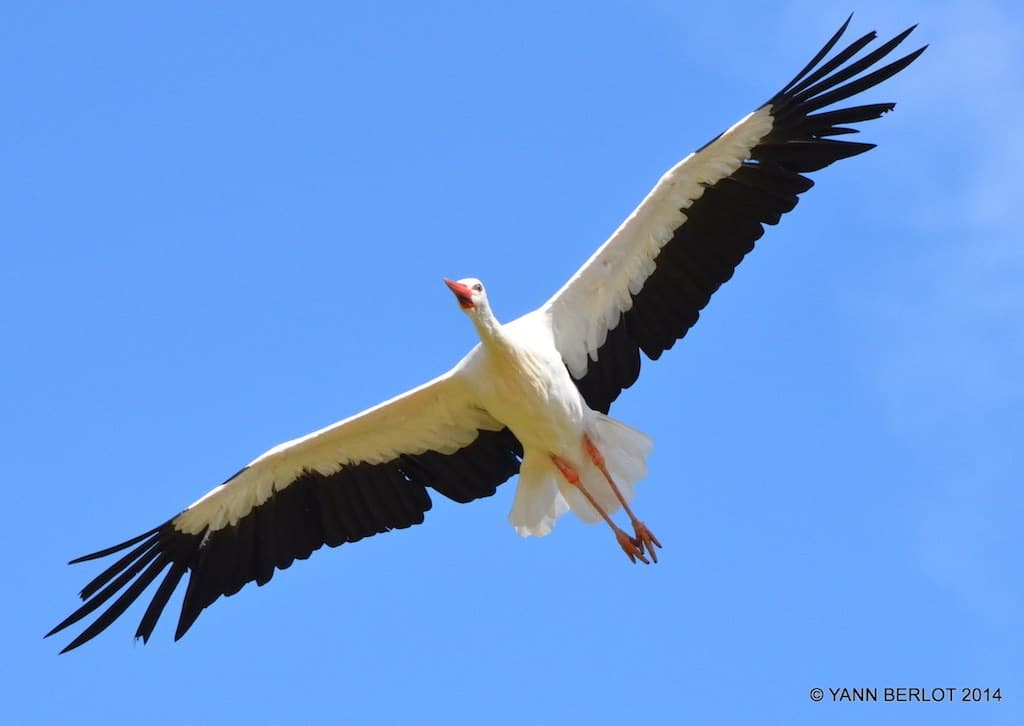
They are not very great singers but they use beak clapping to communicate, especially in couple or parents-chicks relation. In that moment, their posture is very nice: during all beak clapping white storks are putting head on their back.
According to European folklore, white stork is responsible for bringing babies to new parents. The stork held baby in their beak and then would give him to the mother or drop him down the chimney.
In nature, white storks walk in meadows looking for different mousses, insects, worms, fishes and frogs. In captivity, there are eating mainly one day chicks, mousses, little rats and fishes (I give them roach).
For one year babies, our vets recommend to supplement them in calcium and vitamins (we are using Nekton S bringing a large vitamins and Nekton E and Nekton B specializing in each vitamin).
I’ve been worked with white storks in show for the first time around 10 years ago. And I totally fall in love with that wonderful bird. I found a lot of show qualities in that bird.
The first one is probably his gorgeous beauty who makes her an attractive bird. Moreover, in Europe, white storks is known and loved by everybody, which help us sensitive visitors.
My bird trainer eye’s mention the second show quality: white stork has a very very kind temperament. Individually, it’s a peaceful and quiet bird. Many options are offered to you, you can easily work with:
One of the best white stork show quality is that birds are easily free flying with a lot of other species. For example, during our show “Les Maîtres des Airs”, they are flying with: little and big vultures, kites, ibis, marabout storks, cranes (3 different species) and white pelicans.
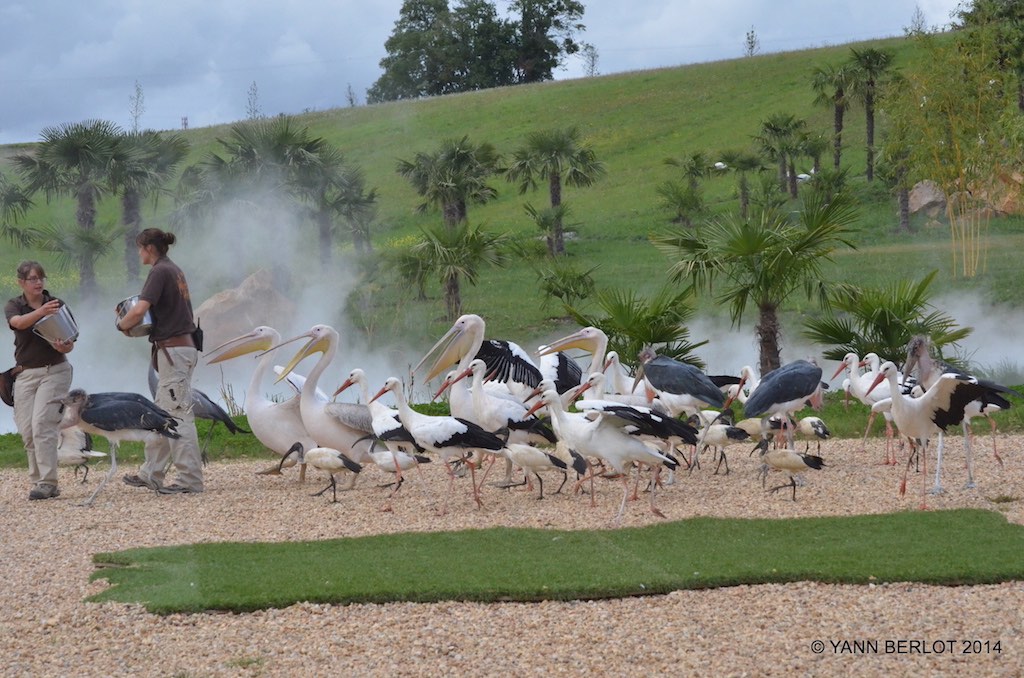
The last show quality is probably all the different flights that white stork offers. You can easily work A to B routine. You can also free flight them just up your audience. And you can offer soaring flights.
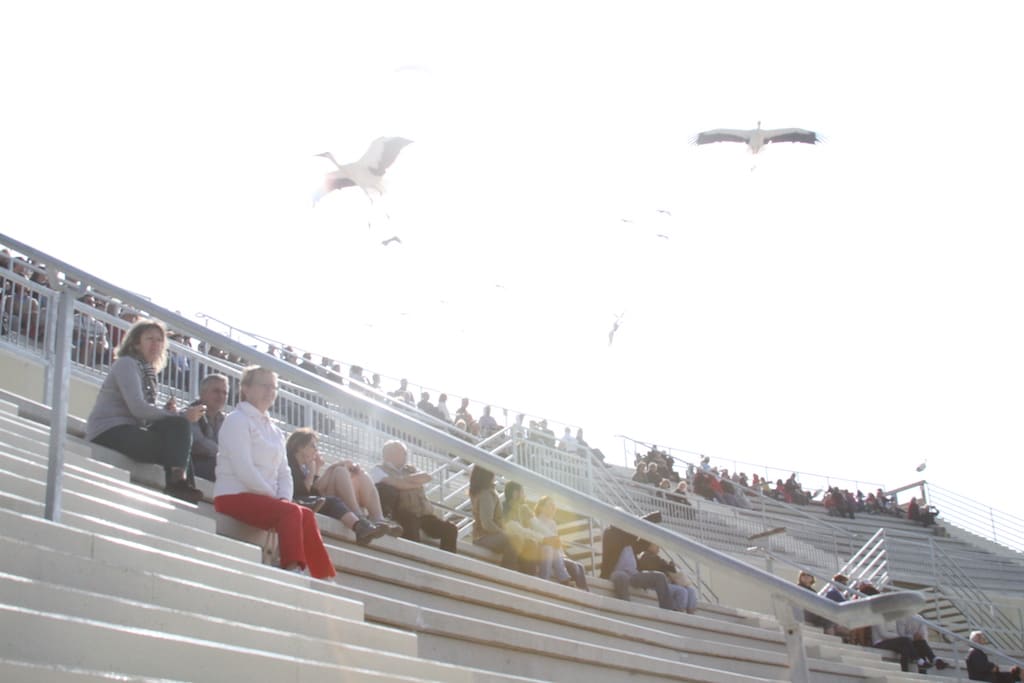
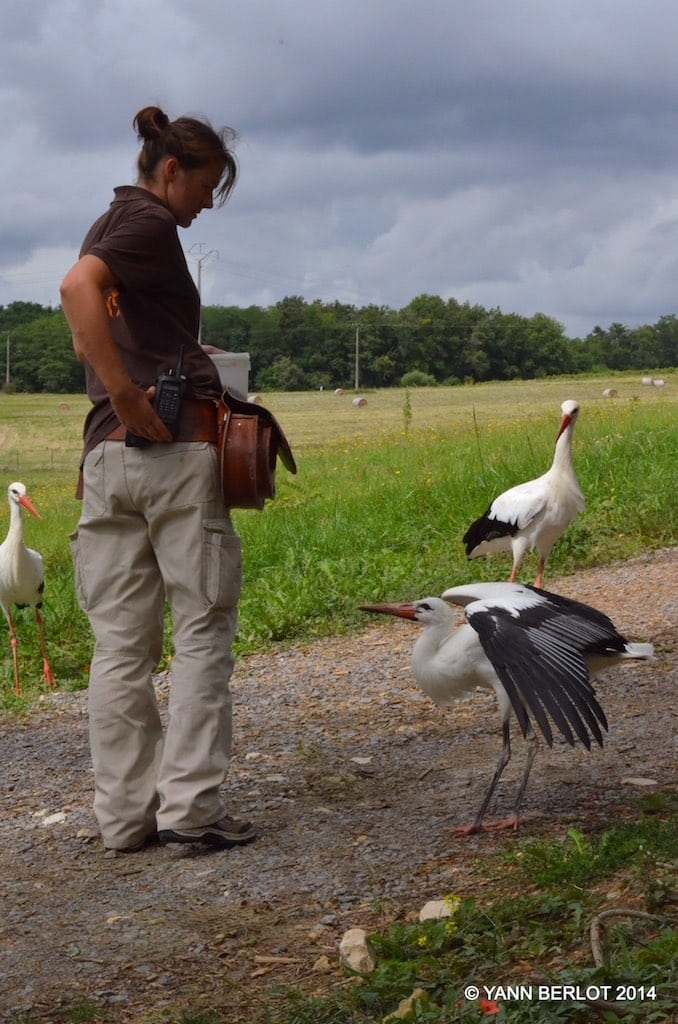
All white storks I’ve trained have been human hand raised babies. A strong impregnation of young storks makes an easier great relationship between human and birds. Moreover, impregnation provides future training.
Training management on white storks is resuming in scaling, touching and fly training. I work a lot into the aviary, becoming very confident before starting all new outside training.
I start scale training very early, I like receiving young storks when they were around one and half month. On that age, flying feathers are ending their growing and young babies are standing on their legs easily. Walk stay sometimes wavering but they are able to move to scale. If they don’t succeed in stepping alone on scale I help them and reinforce them on the scale. For most of birds, scale is an enjoying moment and they are not afraid from it.
For me, a touching training is very important for medical handling and daily management. Our storks are so nice and accept very well all manipulations. As I’ve always trained an important group, I used to move them individually in a double-entrace security door.
Saut de page
Training is going on step by step. Firstly, I leave young storks being confident on their life space, most of the time the perch up to their aviary and do some flights. Giving them those freedom moments is very important for their future, that fix them to the site. But session after sessions they are flying longer and longer, higher and higher. And naturally, they are soaring up to the stage.
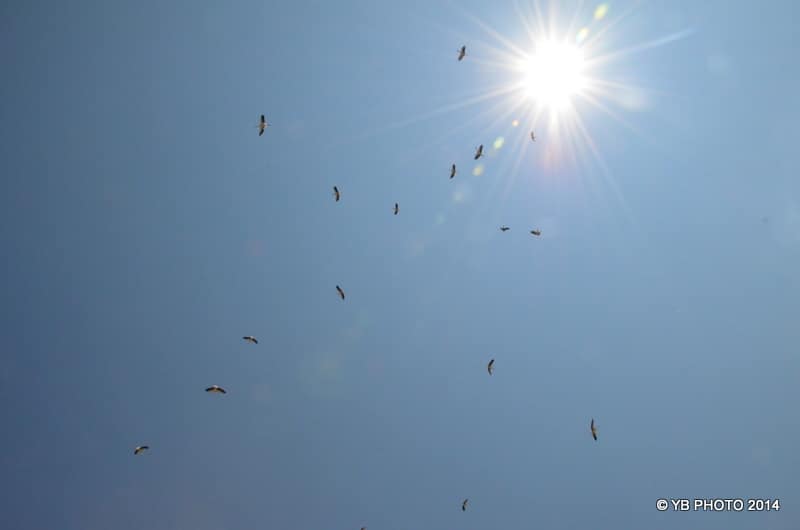
My flying management is the same for white storks as for the other birds: giving them power and empowering them love flying.
During their flight I still keep in contact with them by vocal positive reinforcements.
That’s help them to manage their way and their landing. Thanks to all trainings we do before that I just have to position where I would like them to land, and they naturally join me back. At all landing, I reinforce them by social reinforcements (touching, vocal …) and food.
My major aim during training management is teaching birds love flying. I never ask them to land, I wait they choose landing to reinforce them landing. That’s why they are staying long moments in fly, and easily taking off without any trainer after some sessions.
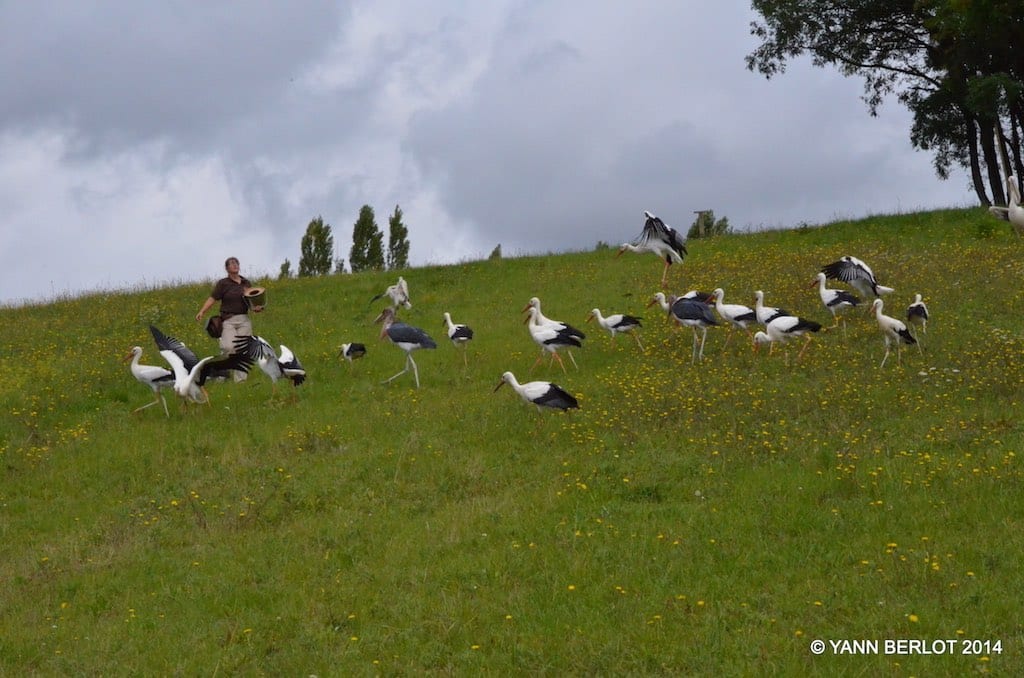
Migration is an instinct for young storks (less than 3 years), because then keep instinct to go back to the South for winter. So the only solution for trainers is to keep them into the aviary all along the migration period (in France it’s approximatively from August, 10th to September 15th). So that’s a sort of law to keep inside young storks to erase their migration instinct.
I was so much disappointed to keep all storks inside their aviary, that I decided to try flying them despite all I’ve heard. I was confident : I trust my birds, I pay a lot attention on their body language. I promise taking any risk if my intuition says me to stop. Thanks to a ugh trust and positive reinforcement I’m flying without problems a 1 and 2 years old white stork group all year long. That’s a big step for white stork training management. I’m just interesting in seeing my results one more year, and I will share more details with you.
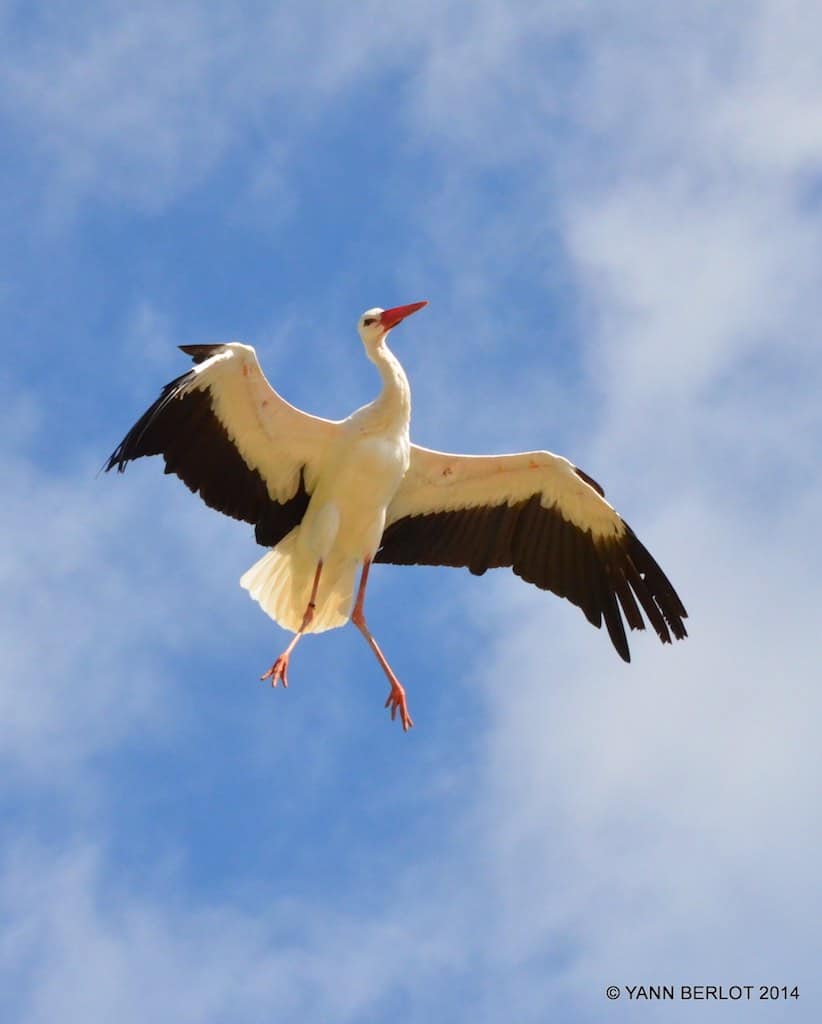
That gorgeous bird is one of my favorite one, all his show qualities made him to be more and more popular in bird shows. I’m pretty sure we can learn more than we actually thought about white stork behaviors, especially in flights and migration. Let’s keeping on and progressing in the positive reinforcement way.
Conditions d’utilisation / reproduction des textes et illustrations
Copyright © Mon Perroquet et/ou auteurs des textes 2016 à 2026
Tous droits réservés
Découvrir nos formations perroquets
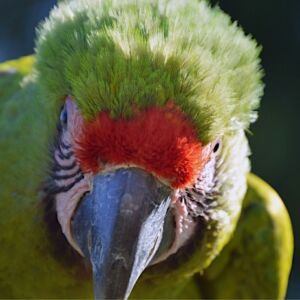
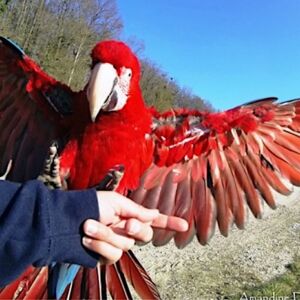
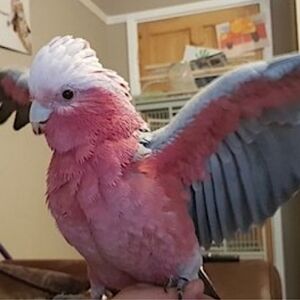
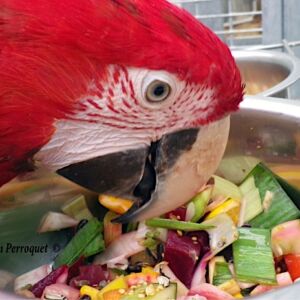
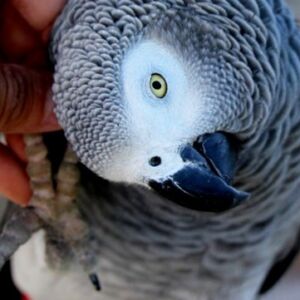
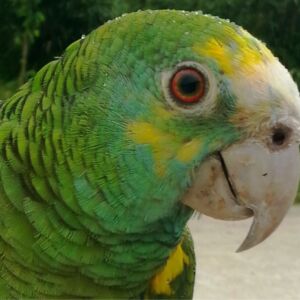
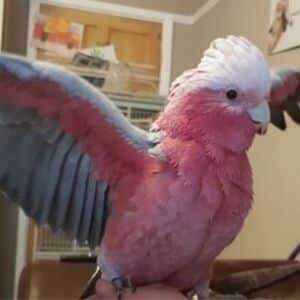
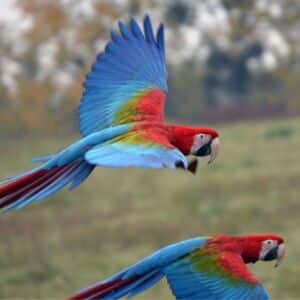
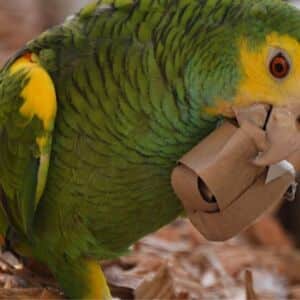

Butinez l’information et améliorez vos connaissances sur les perroquets !